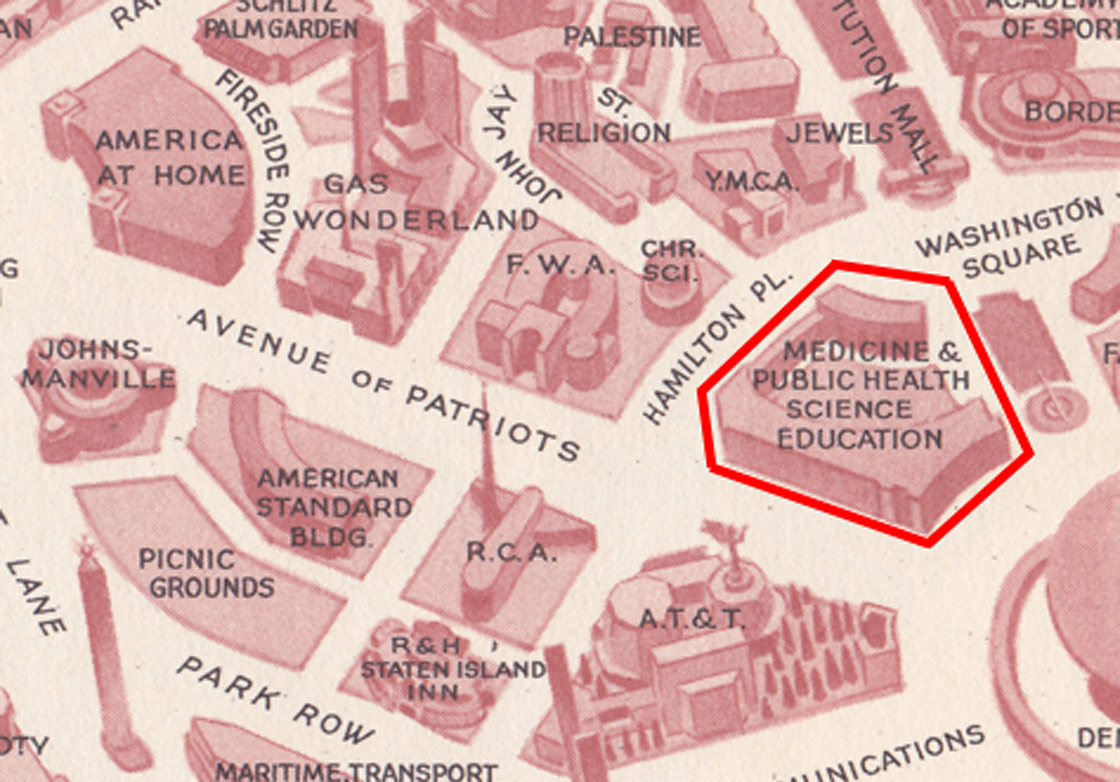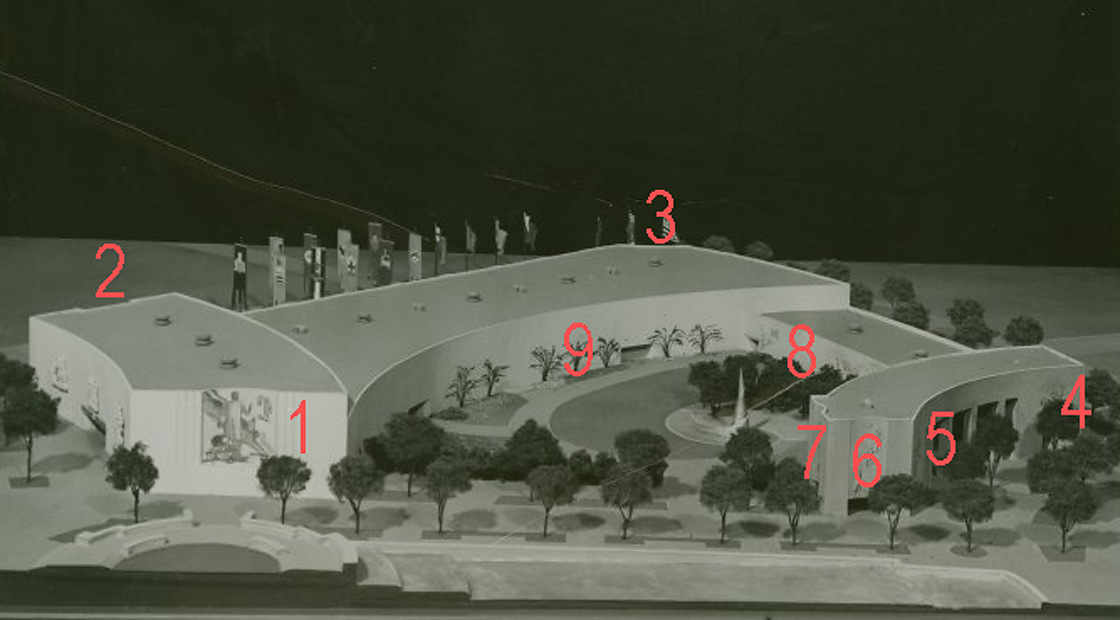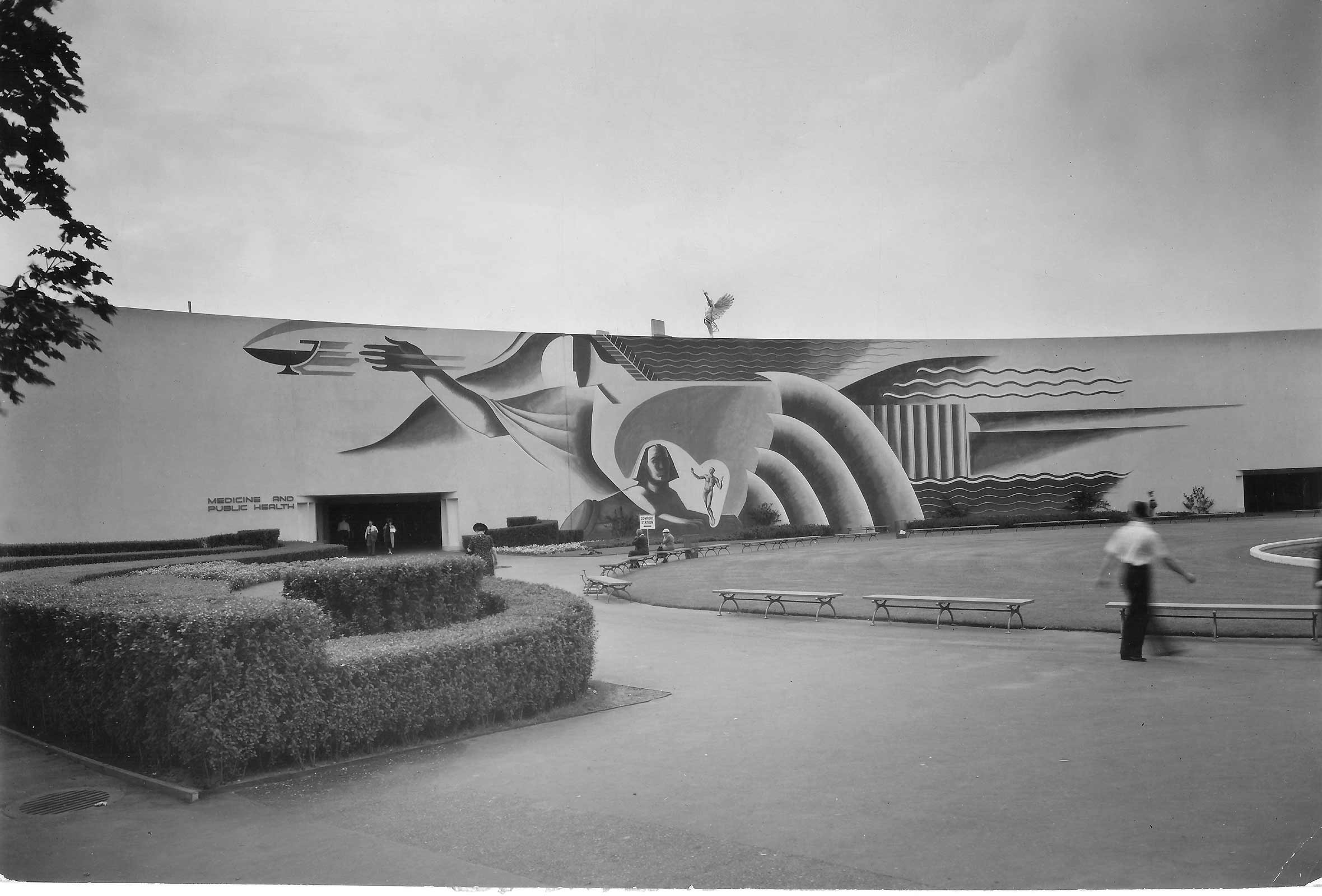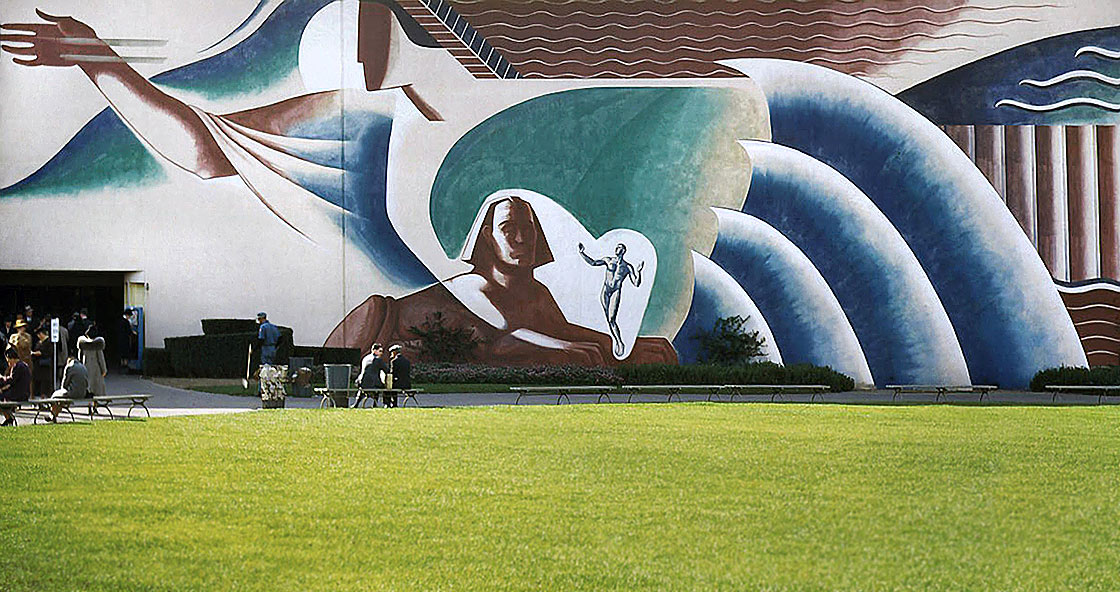Hildreth Meière Documentary Series - Watch Trailer
Hildreth Meière Documentary Series - Watch Trailer
Commissioned by: Mayers, Murray & PhillipMedium: rubber-based paintExecuted by: RambuschNonextant

Detail of map from Official Guide Book – New York World's Fair 1940 showing location of Mayer, Murray & Phillip's Medicine and Public Health, Science and Education Building Complex

To-scale model of the Medicine and Public Health, Science and Education Buildings with the placement of Meière's murals indicated as follows: (1) Modern Medicine (2) Primitive Man and Modern Man (3) Hippocrates, the Father of Medicine and the Dragon of Ignorance (4) Comte de Rochambeau (5) Tadeusz Kosciuszko (6) The Family (7) The School (8) The Picnic (9) Man between the Past and the Future
(9) Medicine and Public Health, Science and Education Building Complex filmed by Hildreth Meière, 1939. Archives of American Art, Smithsonian Institution, Washington, DC
Meière’s most colorful mural, Man between the Past and the Future, appeared on the curved facade facing the courtyard.

Man between the Past and the Future in courtyard
In her Art Deco-style mural, Meière depicted a female figure reaching for the “ever advancing lamp of knowledge.” Man appears between a sphinx symbolizing the past, and waves that represent the future.1

Detail of Man between the Past and Future
Meière explained how she handled the mural’s enormous scale:
The scale demanded by the really tremendous size of the buildings was in itself a problem which few if any of us mural painters had ever had to face. I drew a head ten feet high, I drew a doctor thirty feet tall, and the height of my ‘Linesman’ on the Telephone Building is twenty-five feet. . . .
One begins with small sketches, say an eighth of an inch to the foot, drawn on tracing paper over a blueprint of the building on the same scale. . . .
After the small sketches are approved by all concerned—they had to be passed by the Board of Design of the Fair—they are developed up through other scales, improving (theoretically) as they are more carefully studied, until the full-size cartoon is drawn. Then the artist is ready to go up on the wall of his building, with his traced design and his color studies, and begin to paint. . . .
In my case all my work from this stage on was executed for me by others. . . .
My designs for metal, mosaic, and terracotta also passed through the hands of good craftsmen, and came out, as usual, looking better than the cartoons.2
Department of Feature Publicity, Central files, New York World’s Fair 1939, New York Public Library. See also Catherine Coleman Brawer and Kathleen Murphy Skolnik, The Art Deco Murals of Hildreth Meière (New York: Andrea Monfried Editions): 183-85.
Hildreth Meière, “Working for a World’s Fair,” Journal of the Associated Alumnae of the Sacred Heart 4 (1939-40): 37-39.